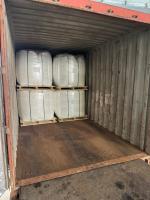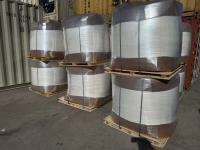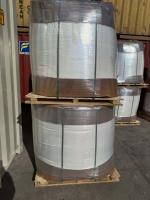Our Products
Polyacrylamide / cationic polyacrylamide(Praestol 260FL K274FLX)can be replaced by chinafloc C8008

cationic polyacrylamide(Praestol 260FL K274FLX)can be replaced by chinafloc C8008
Praestol 260FL K274FLX are two kind of cationic polyacrylamide with very high charge.mainly used for water treatment and sludge dewatering .it can be replaced by chinafloc C8008 tottaly .
Cationic polyacrylamide (CPAM) with an 80% charge density is a high-performance polymer widely utilized in various industrial and environmental processes, primarily for its flocculation and water treatment capabilities. This specific type of CPAM is characterized by its strong cationic charge, making it exceptionally effective in the aggregation of negatively charged particles, leading to their subsequent removal from liquid suspensions. This detailed exploration delves into the primary applications of CPAM with an 80% charge, covering its mechanisms, benefits, and its pivotal role across different sectors.
Water Treatment and Purification
The cornerstone application of cationic polyacrylamide with an 80% charge lies in water treatment and purification processes. Its high charge density makes it particularly suitable for treating industrial wastewater, municipal sewage, and even in potable water treatment facilities. CPAM works by neutralizing the negative charges of particles suspended in water, causing them to aggregate into larger flocs that can be easily settled or filtered out. This process is crucial in removing contaminants such as organic matter, phosphorus, heavy metals, and other particulate pollutants from water, thereby improving water quality and making it suitable for discharge or reuse.
Sludge Dewatering
Another significant application of CPAM with an 80% charge is in sludge dewatering. This process is vital in wastewater treatment plants and industrial settings where large volumes of sludge are generated. CPAM acts as a flocculant, aggregating the solid particles within the sludge, thus enhancing the separation of water from the solids. This results in a more concentrated sludge, which is easier and more cost-effective to transport, treat, and dispose of. The efficiency of CPAM in sludge dewatering lies in its high charge density, which ensures rapid flocculation and sedimentation rates, leading to improved dewatering performance and operational efficiencies.
Papermaking Industry
In the papermaking industry, CPAM with an 80% charge density is used as a retention and drainage aid. It helps in improving the retention of fines, fillers, and other additives within the paper matrix, thereby enhancing paper quality and reducing the loss of valuable materials. Additionally, CPAM facilitates the drainage of water during the paper formation process, improving machine speed and energy efficiency. Its high charge density ensures effective interaction with negatively charged fibers and fillers, leading to better formation, strength, and appearance of the final paper product.
Oil and Gas Production
The oil and gas sector utilizes CPAM with an 80% charge for various applications, including enhanced oil recovery (EOR) and drilling mud treatment. In EOR, CPAM is used to increase the viscosity of water injected into oil reservoirs, improving oil displacement and recovery rates. Its high charge density aids in the effective flocculation of suspended particles in drilling muds, facilitating their removal and ensuring the cleanliness and efficiency of drilling operations. This application is critical for maintaining operational efficiency and minimizing environmental impact.
Mining and Mineral Processing
In mining and mineral processing, CPAM with an 80% charge is employed for the sedimentation and clarification of mining effluents. It assists in the flocculation of fine mineral particles, enabling their easier separation from water. This application is crucial for the recovery of valuable minerals and for the environmental management of mining waste, ensuring the clean and responsible discharge of water back into the environment.
Mechanism of Action
The efficacy of CPAM with an 80% charge in these applications is attributed to its high cationic charge density, which facilitates the neutralization of the negative charges on particles in suspension. This electrostatic interaction results in the bridging and aggregation of particles, forming larger flocs that are more readily separated from the liquid phase through sedimentation, filtration, or centrifugation. The polymer's molecular weight and charge density are key factors that determine its flocculation efficiency and effectiveness in various applications.
Environmental and Health Considerations
While CPAM with an 80% charge is highly effective in its applications, its environmental and health impacts require careful consideration. Proper handling, dosing, and disposal practices must be followed to minimize any potential negative effects on aquatic ecosystems and human health. The biodegradability and toxicity of CPAM and its degradation products are areas of ongoing research, aiming to ensure its safe and sustainable use in industrial and environmental processes.
Future Directions
The application of CPAM with an 80% charge continues to evolve, with research focused on improving its efficiency, reducing its environmental impact, and extending its applications. Innovations in polymer technology and environmental engineering are leading to the development of more effective, eco-friendly, and versatile flocculants. The exploration of new application areas, such as in renewable energy production and advanced manufacturing processes, highlights the ongoing potential and importance of CPAM in modern industry and environmental management.
Conclusion
Cationic polyacrylamide with an 80% charge density plays a critical role in water treatment, sludge dewatering, papermaking,



587_small.jpg)

